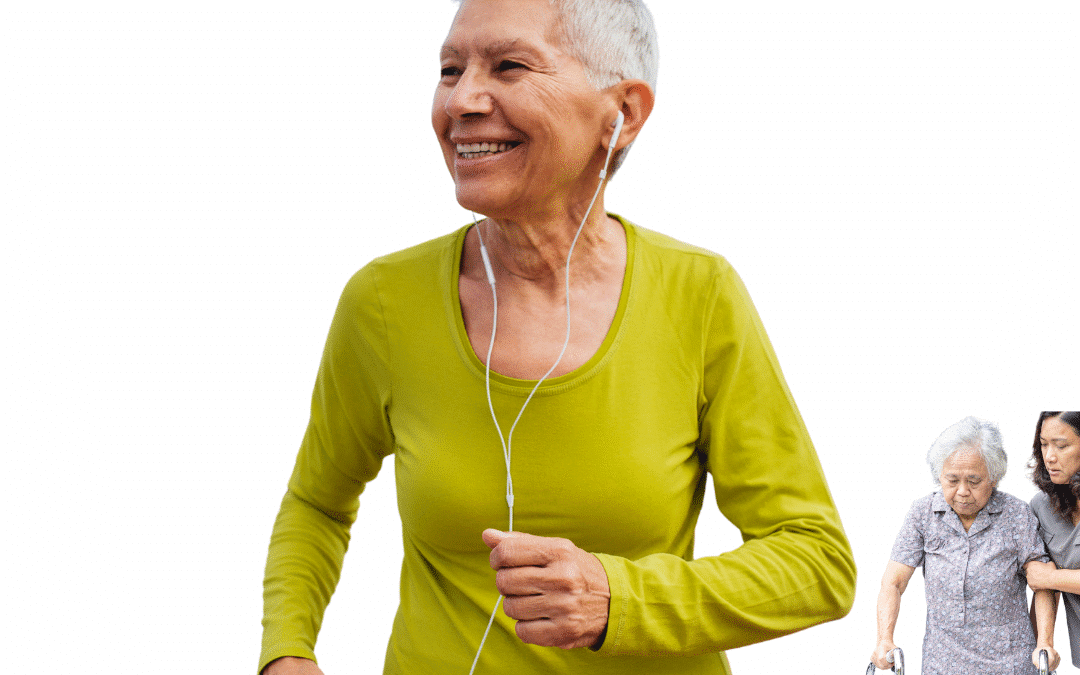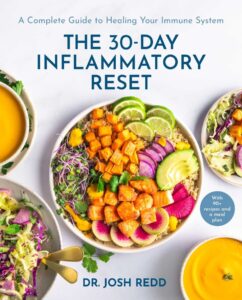Have you noticed that some older people are still able to stay active and lucid well into old age, while others become very frail, confused, and sickly?
While genetics play a role, it’s the daily choices made over many years or decades that matter most.
Compared to men, many women seem to face greater inflammatory challenges that can sabotage healthy aging through more hormonal fluctuations, a greater propensity to autoimmune disease, and the significant impacts of menopause on metabolism, brain health, bone health, and cardiovascular health
Nevertheless, you have far more control over your aging trajectory than you might think.
“Inflammaging:” The Inflammation-Aging Connection
Chronic inflammation is the invisible fire that accelerates aging. Often called “inflammaging,” this low-grade, persistent inflammation damages tissues, impairs cellular function, and sets the stage for the conditions we associate with getting older, such as joint pain, cognitive decline, cardiovascular disease, and metabolic dysfunction.
For women managing autoimmune conditions like Hashimoto’s thyroiditis, rheumatoid arthritis, or lupus, controlling inflammation becomes even more critical. These conditions already place the immune system on high alert. Without intervention, the inflammatory cascade can shorten healthspan significantly, stealing years of vitality and independence.
The good news? An anti-inflammatory lifestyle can not only make the present day more enjoyable but also serve as an investment in later years.
Food as Medicine: The Anti-Inflammatory Foundation
An anti-inflammatory diet emphasizes whole, nutrient-dense foods that support cellular health and immune balance:
Focus on colorful vegetables rich in polyphenols, wild-caught fatty fish providing omega-3s, pasture-raised proteins, healthy fats from avocados and olive oil, and moderate amounts of low-glycemic fruits. Equally important is what you remove: processed foods, excess sugar, industrial seed oils, and potential food sensitivities that trigger immune reactions.
For women with autoimmune conditions, identifying and eliminating personal trigger foods—often gluten, dairy, or nightshades—can be transformative. This isn’t about deprivation; it’s about discovering which foods allow your body to thrive rather than merely survive.
Exercise: The Non-Negotiable Longevity Lever
Diet is absolutely important, but it doesn’t go the full distance in supporting healthy aging. Regular exercise is absolutely vital.
Regular exercise reduces systemic inflammation, preserves muscle mass (which naturally declines after age 30), supports bone density, improves insulin sensitivity, and enhances mitochondrial function, the cellular “batteries” that determine your energy and vitality.
Research consistently shows that women who stay physically active throughout life preserve strength, mobility, and independence significantly longer—often by as much as a decade—compared to those who remain sedentary.
Exercise isn’t optional for healthy aging; it’s essentially a longevity drug.
Your Exercise Protocol for Healthy Aging
- Strength Training (2-3 times per week)
- Cardiovascular Exercise (4-5 times per week)
- We see the most benefit from High Intensity Interval Training (HIIT) 2-3 times a week, but anything is better than being sedentary.
- Mix steady-state cardio into your weekly HIIT sessions with things like walking, rowing, cycling, or swimming.
- Aim for at least 150 minutes of moderate activity or 75 minutes of vigorous activity weekly.
- It’s best to exercise in the morning to support healthy cortisol rhythms.
Balance, Flexibility and Mobility
- Work on a good range of motion through regular stretching whether in yoga or Pilates classes or at home.
- Pay special attention to hip and thoracic spine mobility, which decline significantly with age.
- Include balance work to prevent falls, which become increasingly dangerous with age.
Recovery and Rest
- One of the best ways to spike inflammation and accelerate aging is to overtrain. Honor your body’s need for rest and recovery.
- Prioritize sleep (7-9 hours) as the ultimate recovery tool.
- Consider lower-impact “active recovery” things like like walking or gentle yoga on rest days to promote blood flow without stress.
Consistency Over Intensity
- Not everyone is the same when it comes to exercise. One person’s warmup might be another person’s HIIT. It doesn’t matter, just start where you are and prioritize consistency over intensity.
- You want to exercise vigorously enough to build muscle and support cardiovascular health, but you also need to be able to recover quickly so you can exercise daily. What that looks like will vary from person to person depending on their ability and health.
- People with very compromised health can even benefit from isometric exercises while sitting or lying down if walking or going to the gym are too stressful. If you’re having an autoimmune flare, don’t push through it. Listen to your body and take the rest you need.
Think of your older age as a retirement account. Regardless of how old you are now, start contributing to it daily. Your future self will thank you.



